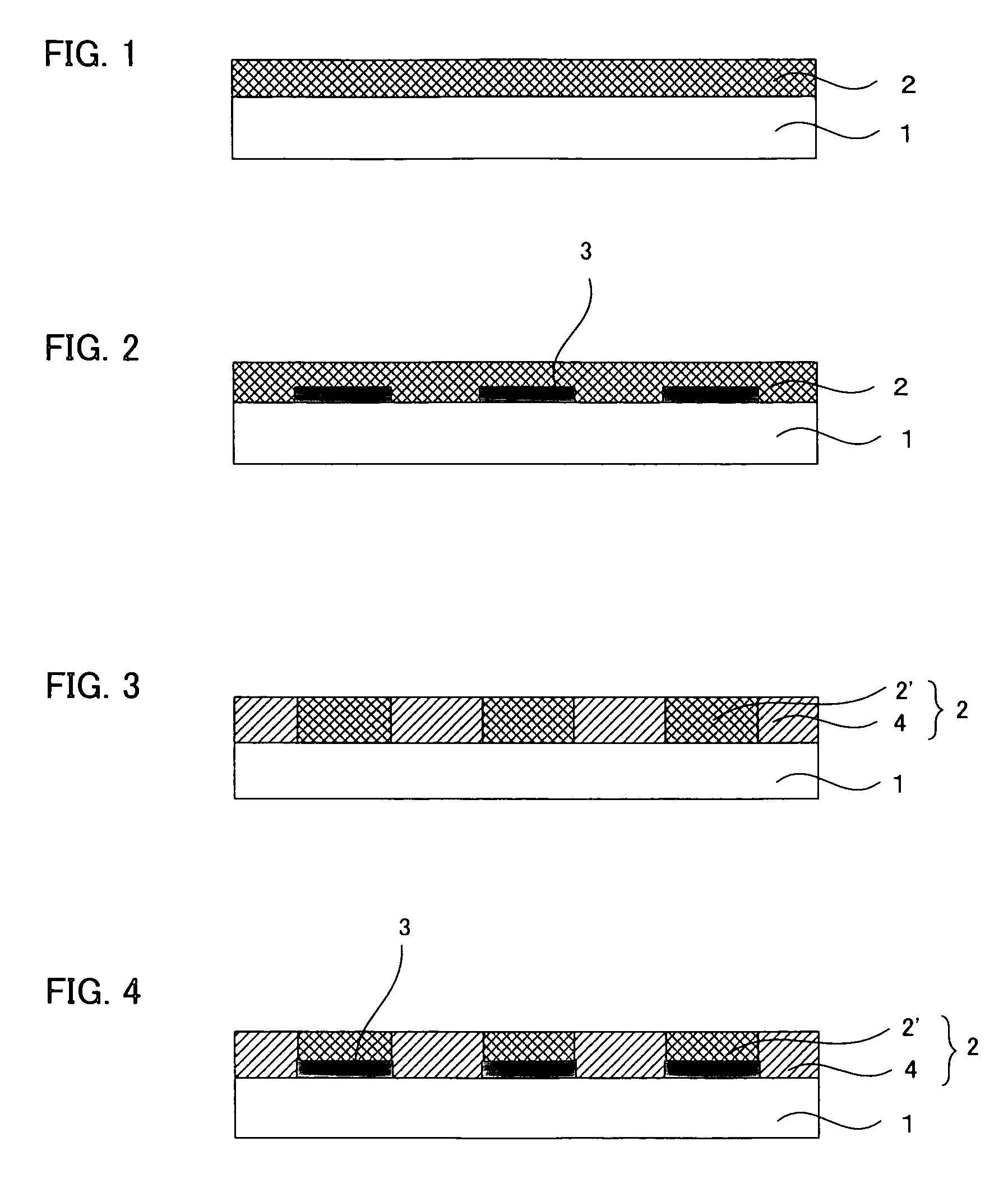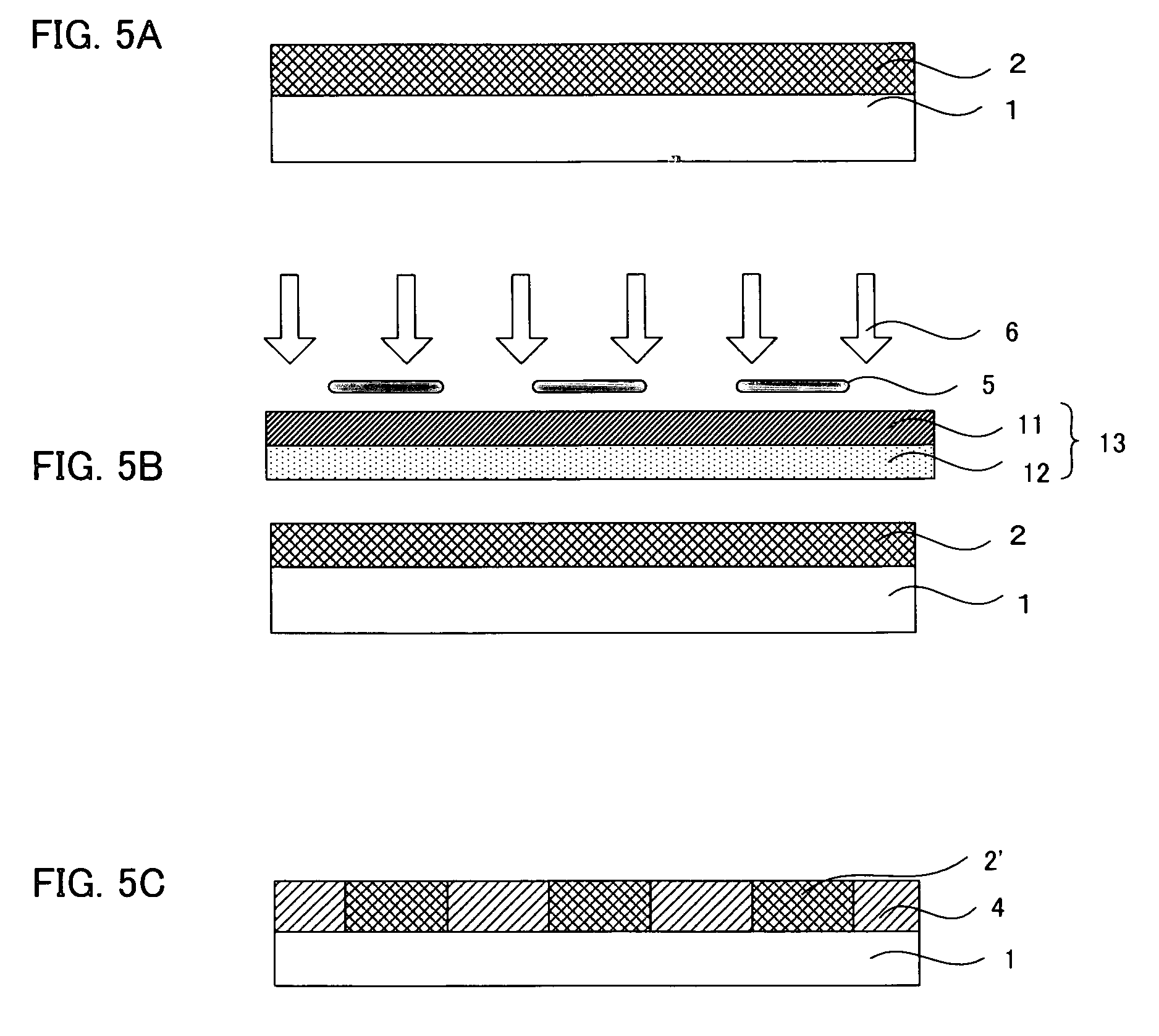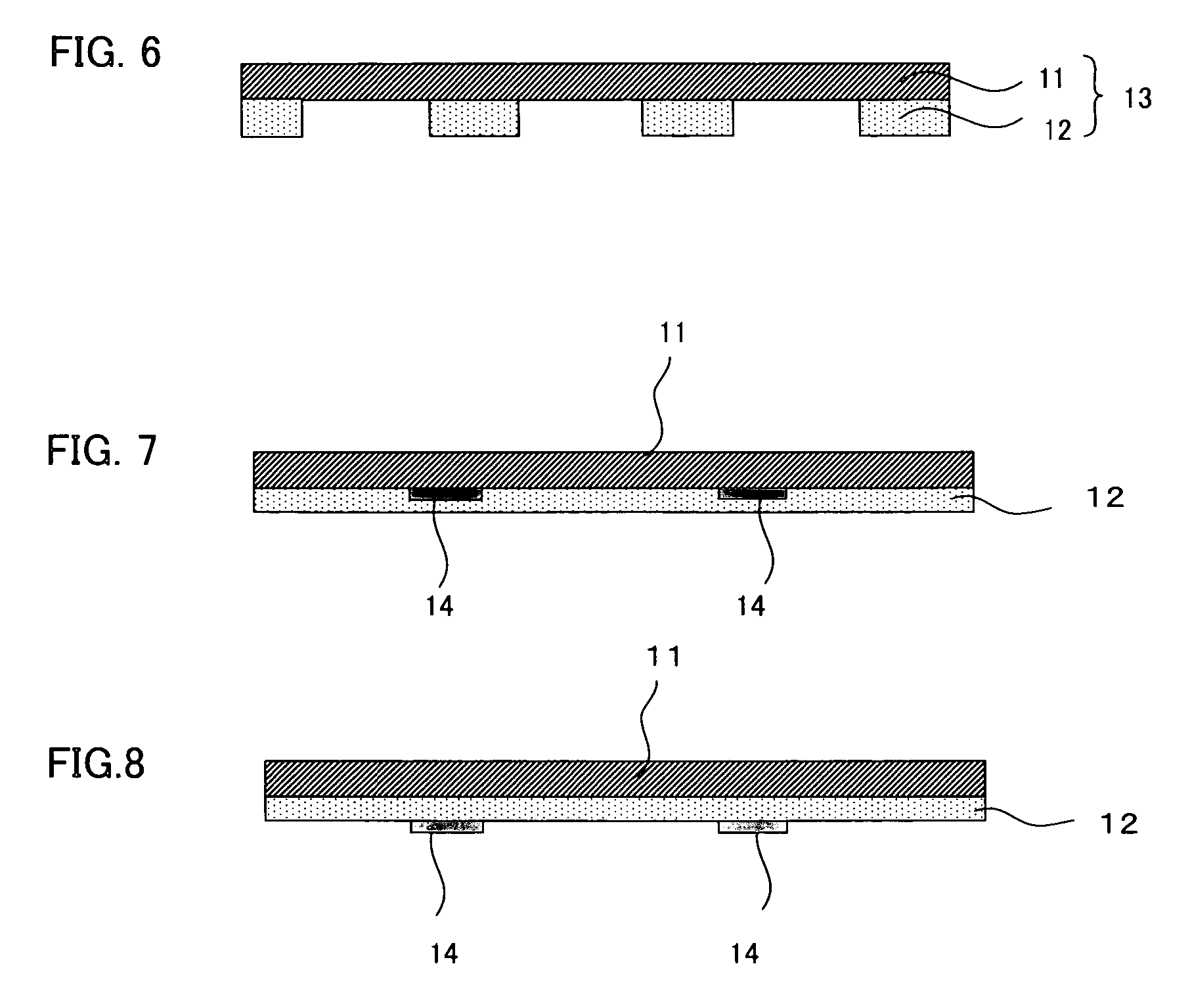Patterning substrate and cell culture substrate
a cell culture substrate and patterning technology, applied in the field of cell culture patterning substrates, can solve the problems of inability to survive for a long period under flotation conditions out of organisms, extremely narrow selectivity of cell adhesive materials, adverse effects of culturing cells in some cases, etc., and achieve the effect of easy production of cell culture substrates
- Summary
- Abstract
- Description
- Claims
- Application Information
AI Technical Summary
Benefits of technology
Problems solved by technology
Method used
Image
Examples
first embodiment
1. FIRST EMBODIMENT
[0103] First, the first embodiment of the patterning substrate of the invention is described. The patterning substrate is a member comprising: a base material; and a cell adhesion-inhibiting layer which is formed on the base material and comprises a cell adhesion-inhibiting material that has cell adhesion-inhibiting properties of inhibiting adhesion to cells and is denatured by action of a photocatalyst on the basis of irradiation with energy.
[0104] In the present embodiment, the cell adhesion-inhibiting material is a material which is denatured by action of a photocatalyst on the basis of irradiation with energy; therefore, for example, by using such as a photocatalyst-containing layer comprising the photocatalyst to irradiate energy onto the cell adhesion-inhibiting layer, the cell adhesion-inhibiting material is denatured so that the cell adhesion-inhibiting properties thereof decrease. As a result, a region having cell adhesive properties can be formed. On th...
second embodiment
2. SECOND EMBODIMENT
[0125] The following will describe the second embodiment of the patterning substrate of the present invention. The patterning substrate of the embodiment is a member comprising: a base material; and a cell adhesion-inhibiting layer which is formed on the base material and comprises a binder and a cell adhesion-inhibiting material that has cell adhesion-inhibiting properties of inhibiting adhesion to cells and is decomposed or denatured by action of a photocatalyst on the basis of irradiation with energy.
[0126] According to the present embodiment, the cell adhesion-inhibiting material is decomposed or denatured by action of a photocatalyst on the basis of irradiation with energy; therefore, for example, by using such as a photocatalyst-containing layer comprising the photocatalyst to irradiate energy onto the cell adhesion-inhibiting layer, the cell adhesion-inhibiting material is decomposed or denatured so that the cell adhesion-inhibiting properties of the regi...
example 1
(Formation of a Cell Adhesion-Inhibiting Layer)
[0220] Three grams of isopropyl alcohol, 0.4 g of an organosilane, TSL8114 (manufactured by GE Toshiba Silicones), and 0.1 g of a fluoroalkylsilane, XC95-A9715 (manufactured by GE Toshiba Silicones) were mixed, and the mixture was heated at 100° C. for 20 minutes while stirred. This solution was applied onto a glass substrate (thickness: 0.7 mm) subjected to alkali treatment in advance by spin coating, and the substrate was dried at 150° C. for 10 minutes to advance hydrolysis and polycondensation reaction, thereby forming, on the substrate, a cell adhesion-inhibiting layer (thickness: about 40 nm) made of an organopolysiloxane layer having fluoroalkyl groups. In this way, a patterning substrate was formed.
(Patterning of the Patterning Substrate)
[0221] A photomask on which a photocatalyst layer was formed was put onto the patterning substrate to dispose the photocatalyst layer and the cell adhesion inhibiting layer of the patternin...
PUM
 Login to View More
Login to View More Abstract
Description
Claims
Application Information
 Login to View More
Login to View More - R&D
- Intellectual Property
- Life Sciences
- Materials
- Tech Scout
- Unparalleled Data Quality
- Higher Quality Content
- 60% Fewer Hallucinations
Browse by: Latest US Patents, China's latest patents, Technical Efficacy Thesaurus, Application Domain, Technology Topic, Popular Technical Reports.
© 2025 PatSnap. All rights reserved.Legal|Privacy policy|Modern Slavery Act Transparency Statement|Sitemap|About US| Contact US: help@patsnap.com



